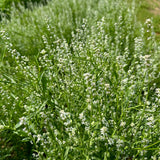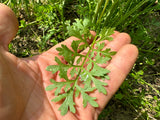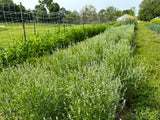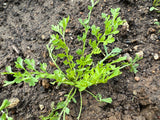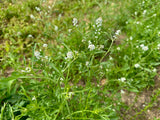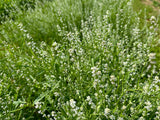Rashad - Iraqi Cress
Lepidium sativum
Spicy sweet mustard flavored green. Technically a cress, but functions as a flat leaf herb, used alongside parsley, green onion, cilantro, and the like. This “khudthra” plate of herbs is served as a fresh accompaniment to the main meal, for snacking and adding to fresh bread wraps called "laffa". Endemic to Iraq, rashad is possibly the most popular seed to have made its way with fellow Iraqis to the diaspora, often planted in backyard gardens to be harvested fresh for a meal. This plant grows and goes to seed very quickly and is a great green to have several successions of for a continuous harvest, like cilantro. Grows best in the cooler shoulder seasons.
These seeds were cultivated by the Iraqi Seed Collective, a group of diasporic people of Mesopotamian heritage who are saving seeds to uplift and preserve ancient culture from the fertile crescent. 10% of the sale of this seed goes to the Iraqi Seed Collective.
Due to years of war, colonialism, and the destruction of the Iraqi national seed bank during the 2003 US invasion, and present-day, ongoing waterway diversion by Turkey and Iran, traditional Iraqi plant varieties and seed saving practices have been disrupted and threatened. We have a responsibility to help keep these endangered varieties – stemming from the dawn of agriculture – in circulation.
Days to maturity: 45
Seeds per pack: 300-325
Germination rate: 94% on 09/22/2025
Planting / harvesting notes
Shallowly sow seeds directly in the ground as soon as the soil can be worked in the spring, and then every 8 to 10 days. For larger plants, thin to 4-8" apart, in rows 1' apart.
Seed keeping notes
Allow plants to bolt, and allow the flowers to fade and dry out. Harvest the entire flower stalk when it has dried fully, and lay it out somewhere away from rain and humidity so it can dry further. Whack the seed heads in a bucket to loosen the ripe seeds. Sift them out with a strainer, and winnow away the lightweight chaff with wind, breath, or a fan.







